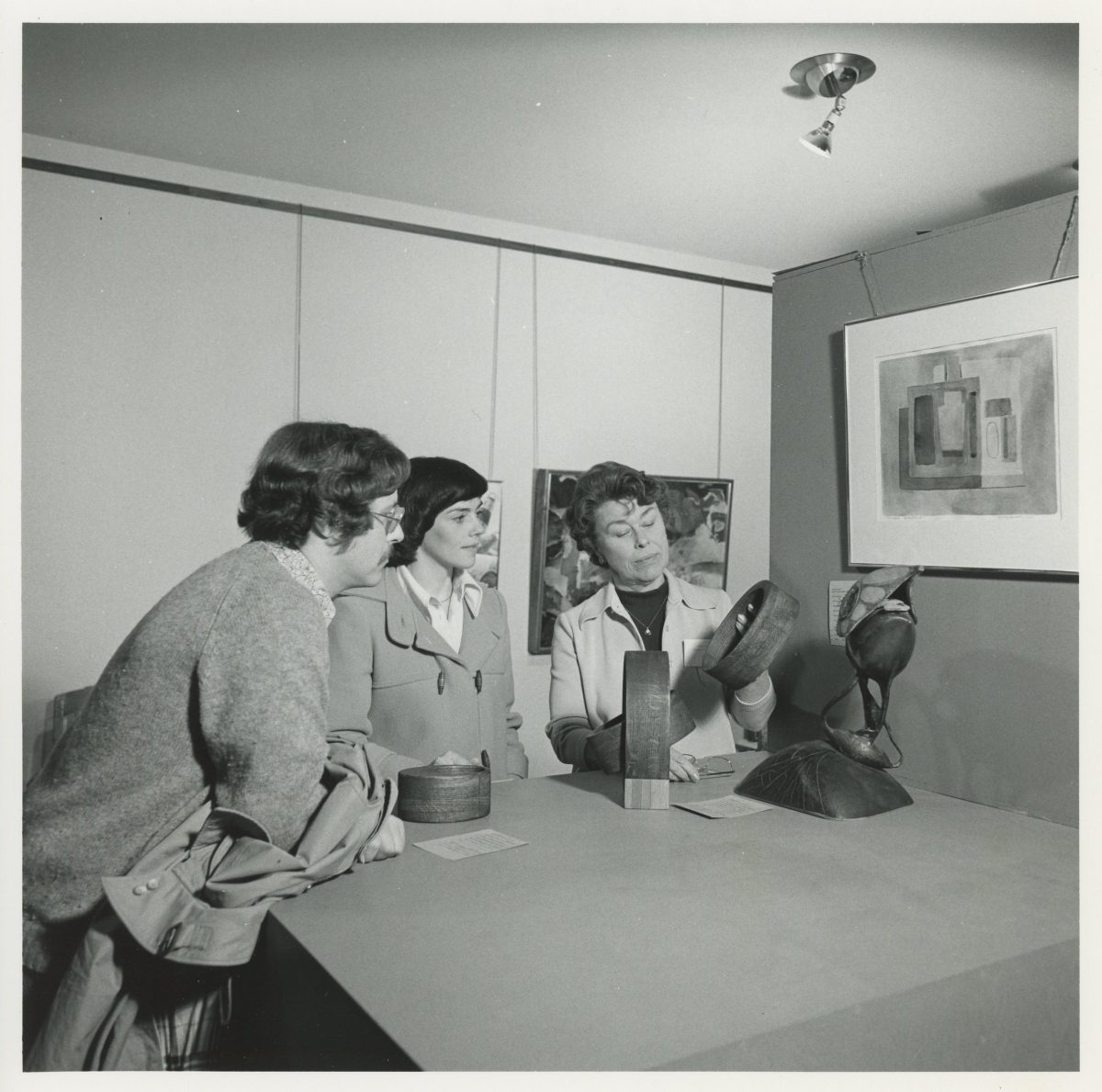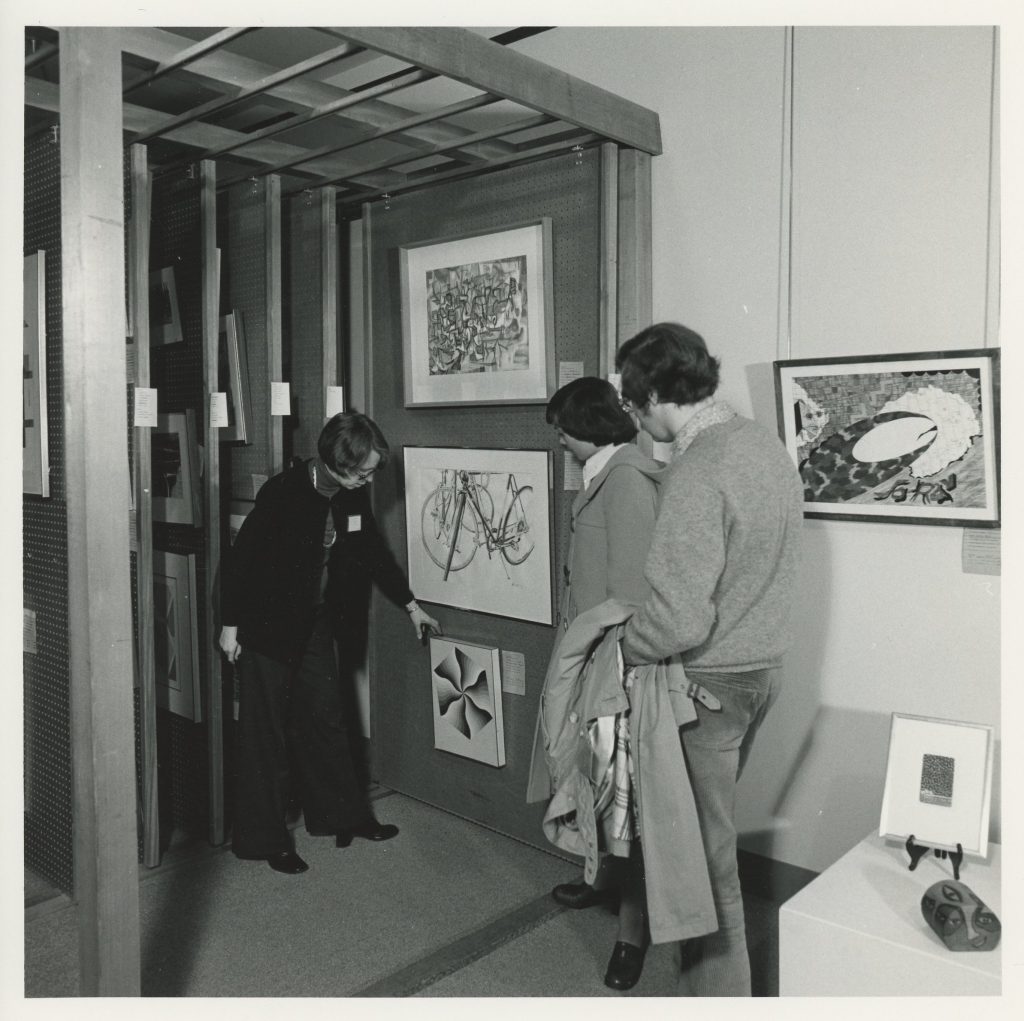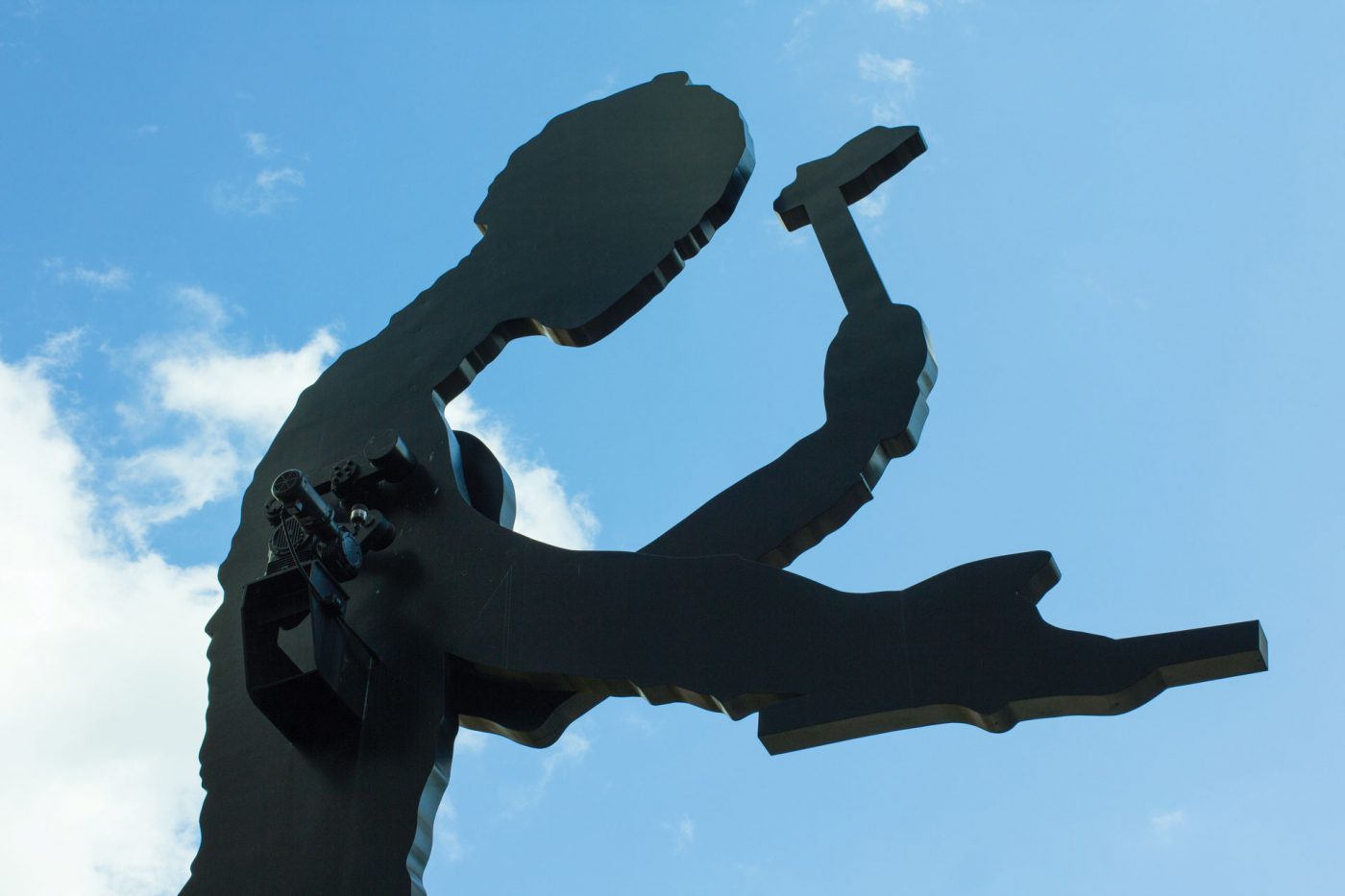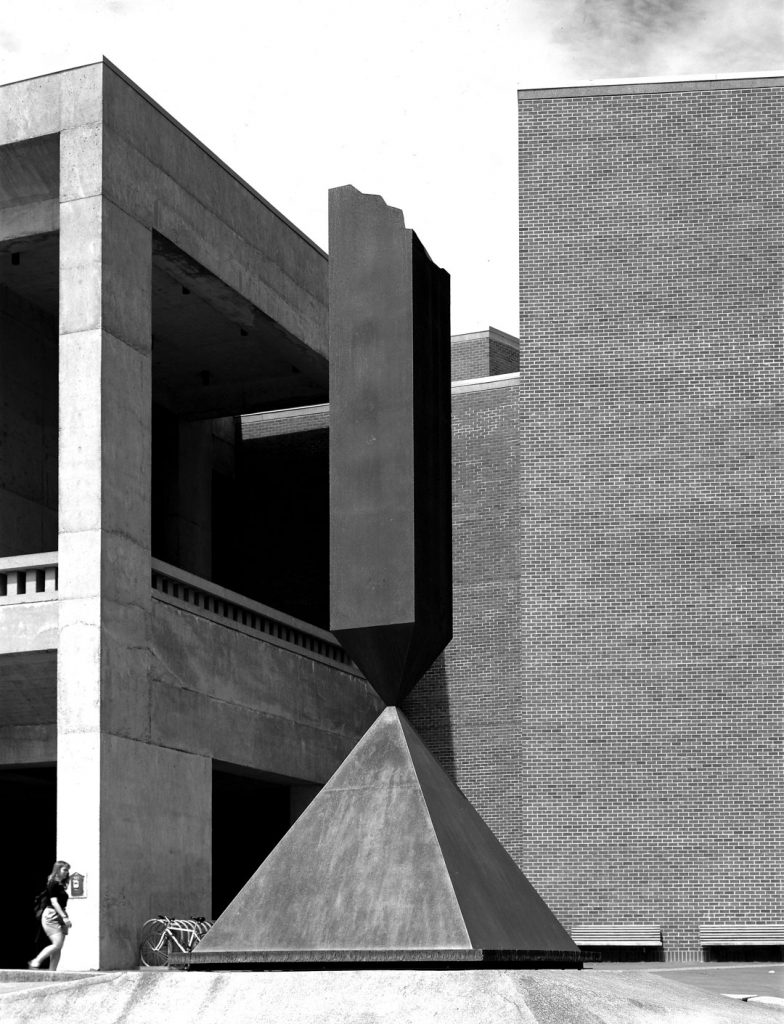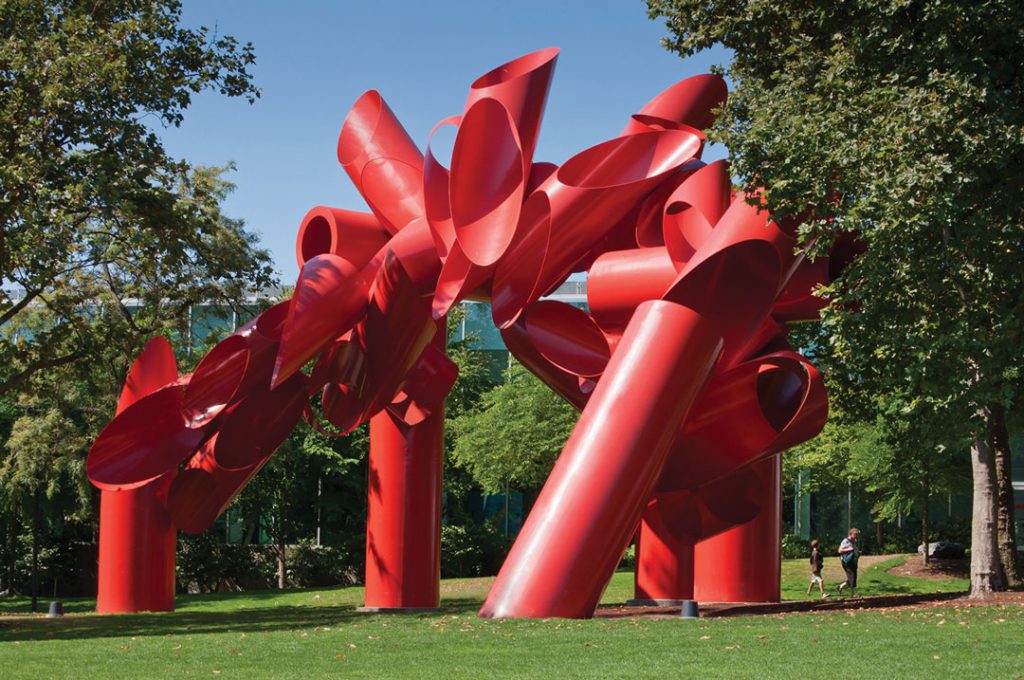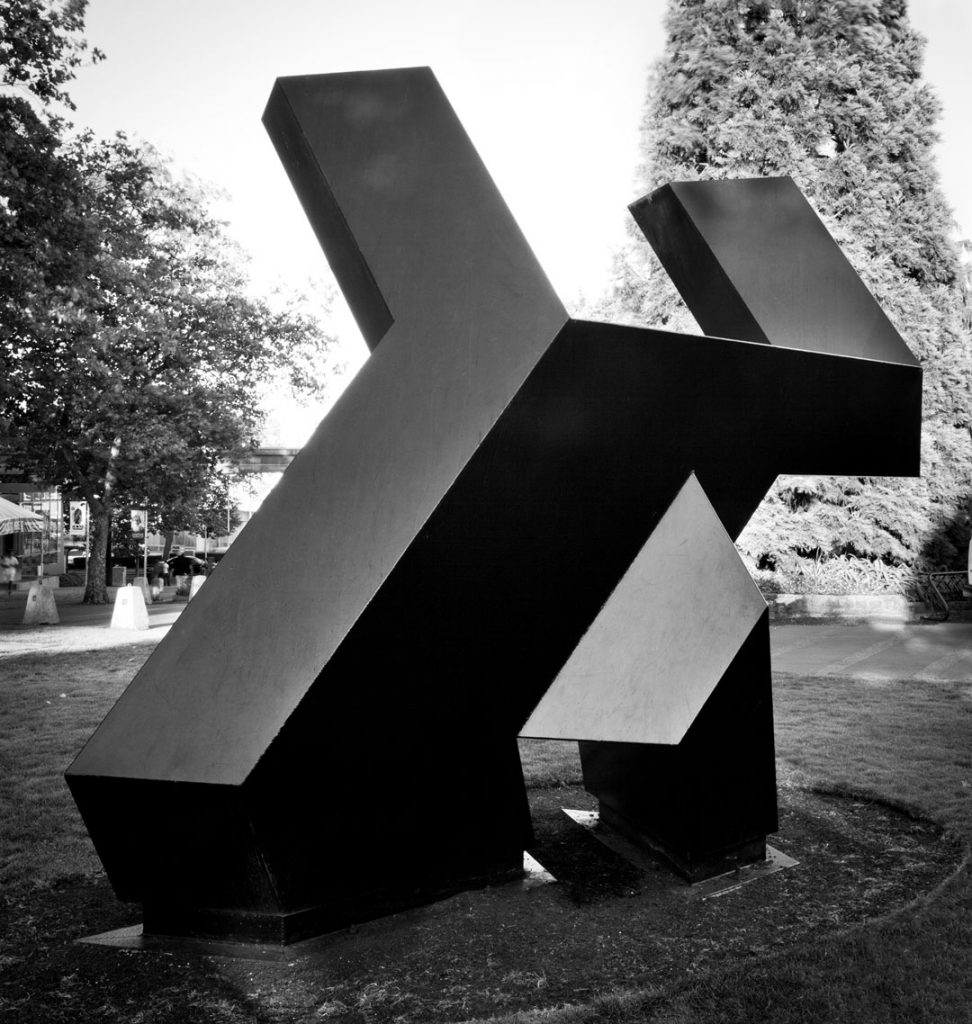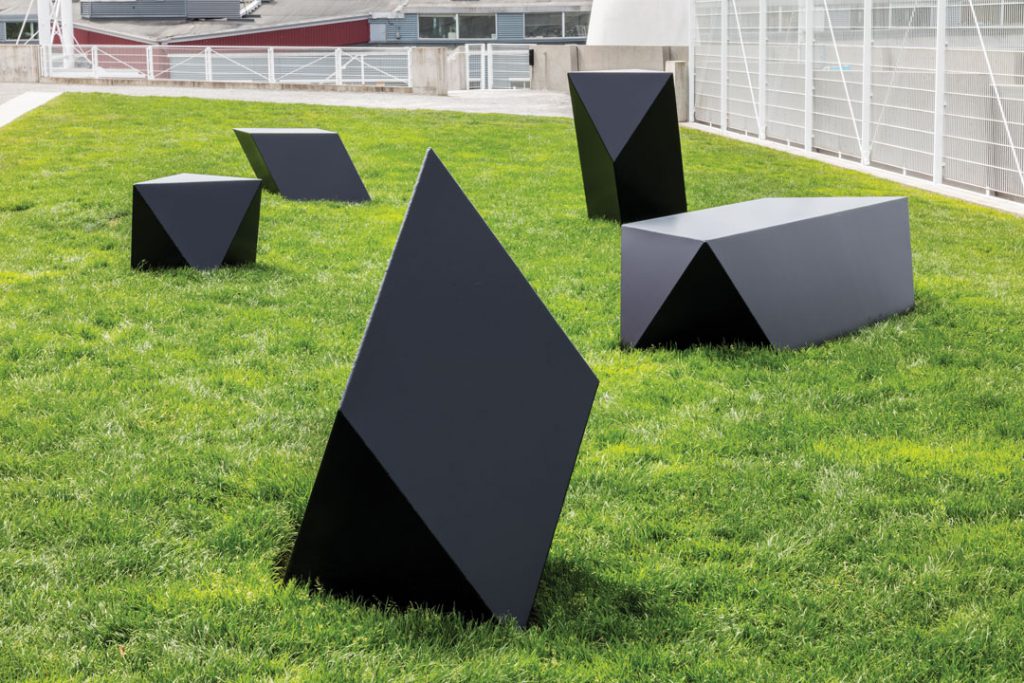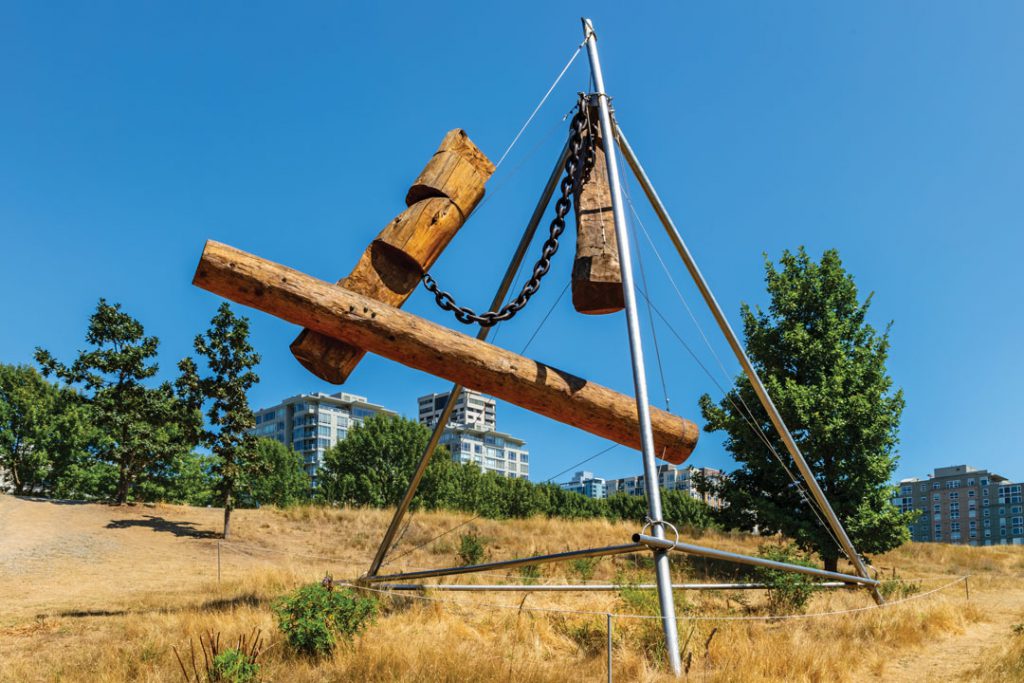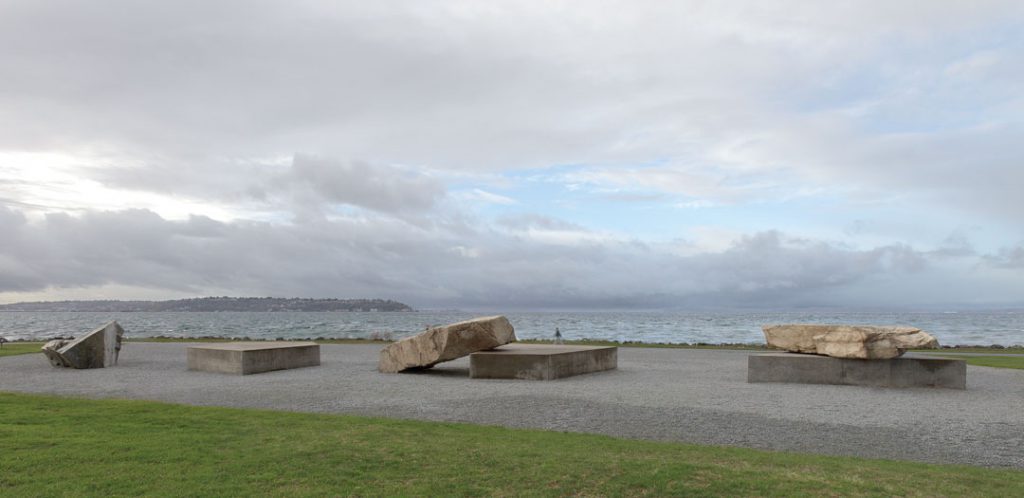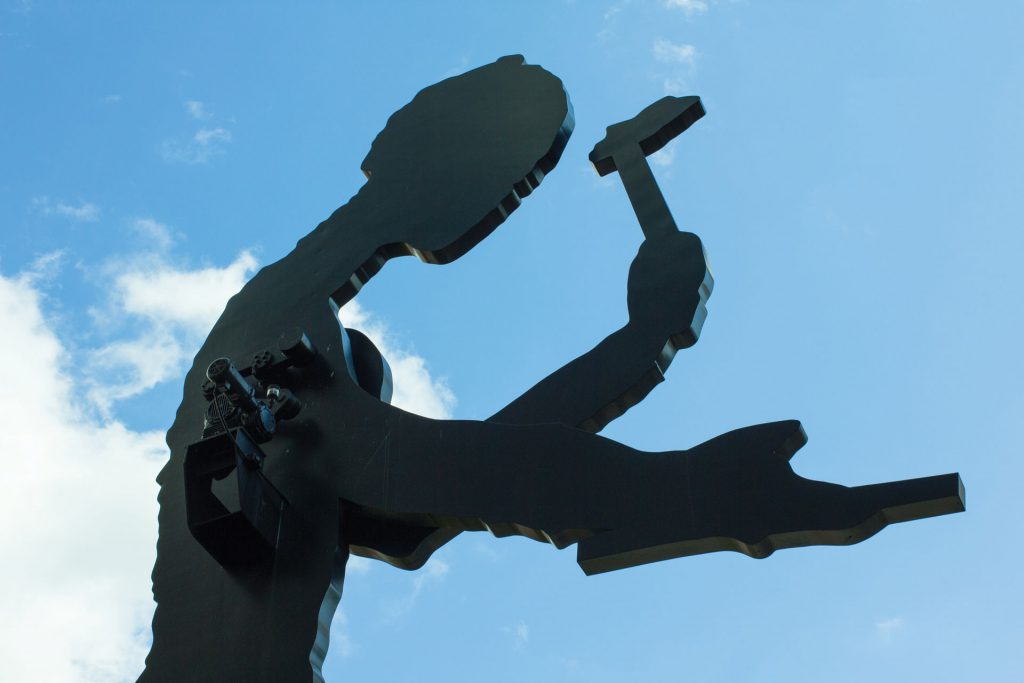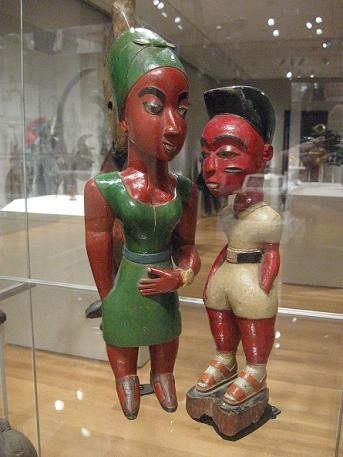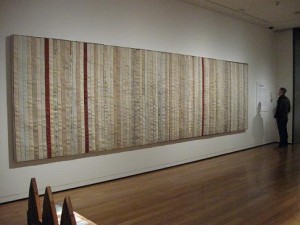Five Decades of Supporting Local Artists: SAM Gallery Celebrates 50 Years
This November, SAM Gallery is celebrating 50 years of supporting local artists and building relationships with local collectors. When the program began in 1973, SAM Gallery was managed by former volunteer Jackie Macrae and a team of 25 dedicated SAM docents. Through a great deal of research, many volunteer hours, and a $1,000 loan from the Macrae family, the gallery officially opened its doors to the public. Five decades later, SAM Gallery is staffed by a full-time manager devoted to art sales and rentals and several part-time employees, with additional support from the museum’s Associate Director for Retail Operations and SAM Shop team members.
At its founding, SAM Gallery was known as the Seattle Art Museum Rentaloft and was located in the Modern Art Pavilion at the Seattle Center. In 2004, it was renamed SAM Gallery and moved to 1220 Third Avenue, a block east of the Seattle Art Museum. When the expanded Seattle Art Museum opened in the heart of Seattle in 2007, SAM Gallery moved to its current location on the lower level of the museum, within the SAM Shop space on First Avenue.
In 1973, SAM Gallery supported 86 artists and carried paintings, sculptures, constructions, photography, and conceptual art. Today, SAM Gallery supports over 50 artists from across the Pacific Northwest. The gallery carries paintings, sculptures, prints, photographs, drawings, and mixed-media works, all of which are available for rental or purchase.
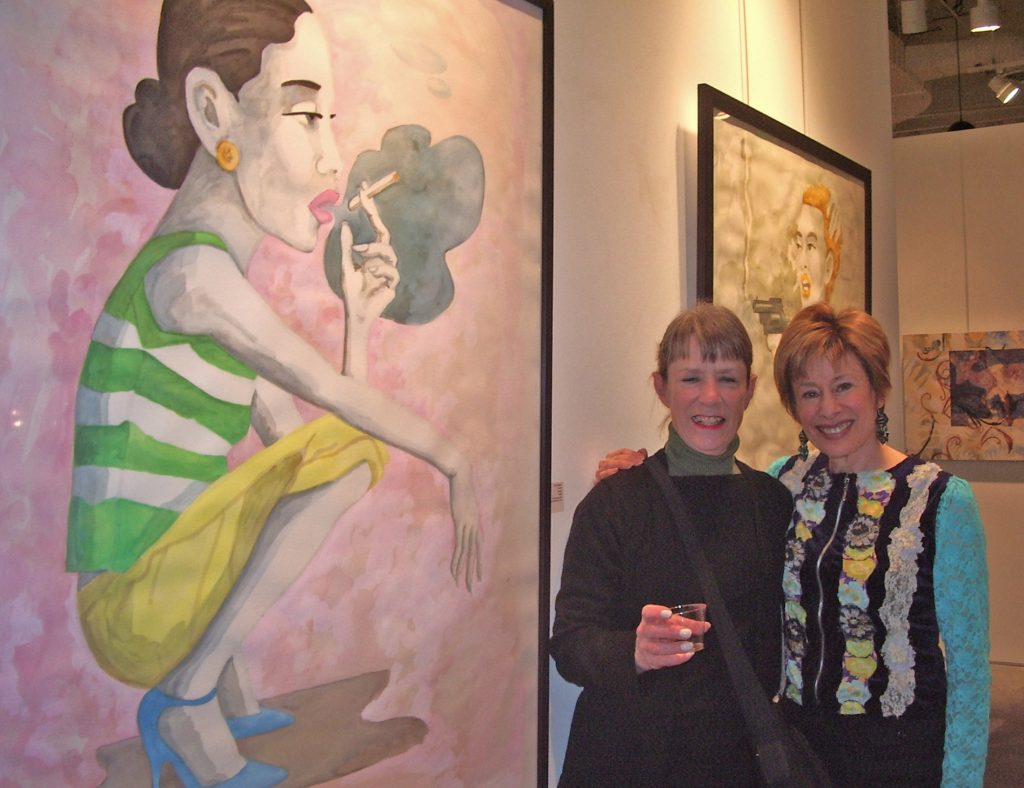
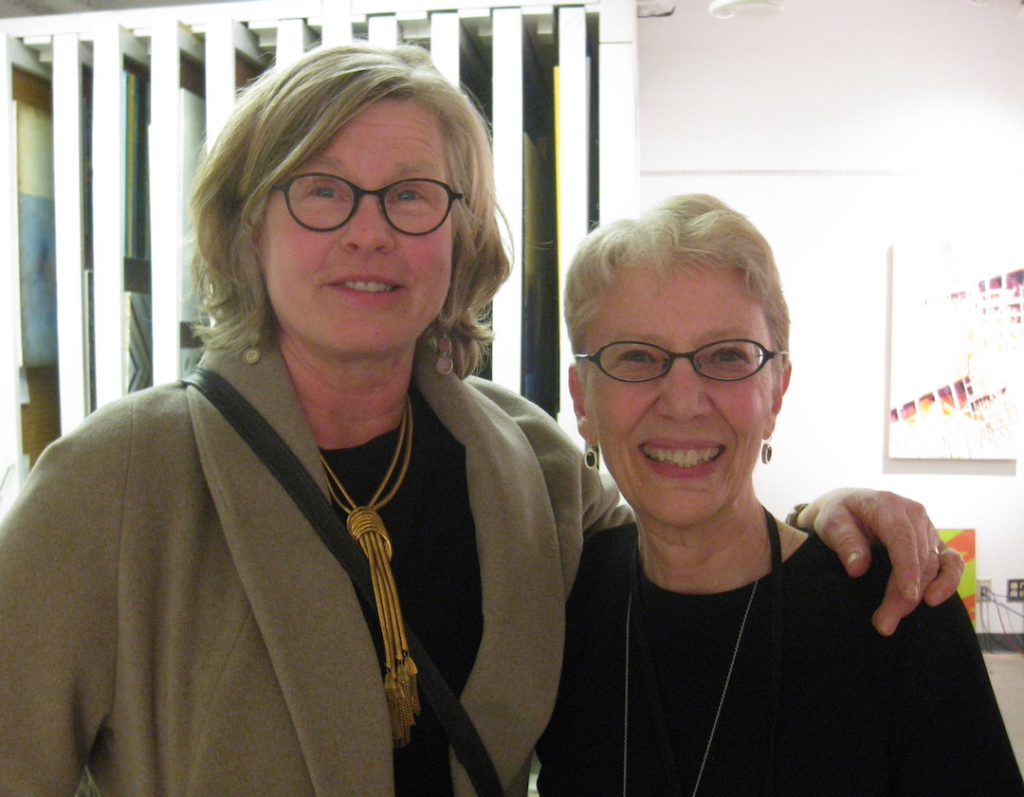
Many things have changed in the five decades since SAM Gallery was founded, but its mission has remained the same: to support local artists by increasing their exposure and finding audiences for their work. SAM Gallery continues to work with corporate and private clients to help them connect with local artists and build their private art collections. SAM members are able to rent any artwork before making a purchase that directly supports the local artists who live and work in our community. Join us in celebrating SAM Gallery’s 50th anniversary at our Anniversary Party this Saturday, November 4 and Artist Reception on Saturday, November 18. We hope to see you there!
– Pamela Jaynes, SAM Gallery Specialist
Photo: Courtesy © Seattle Art Museum, photo: Paul Marshall Macapia, 1976, archive image.
